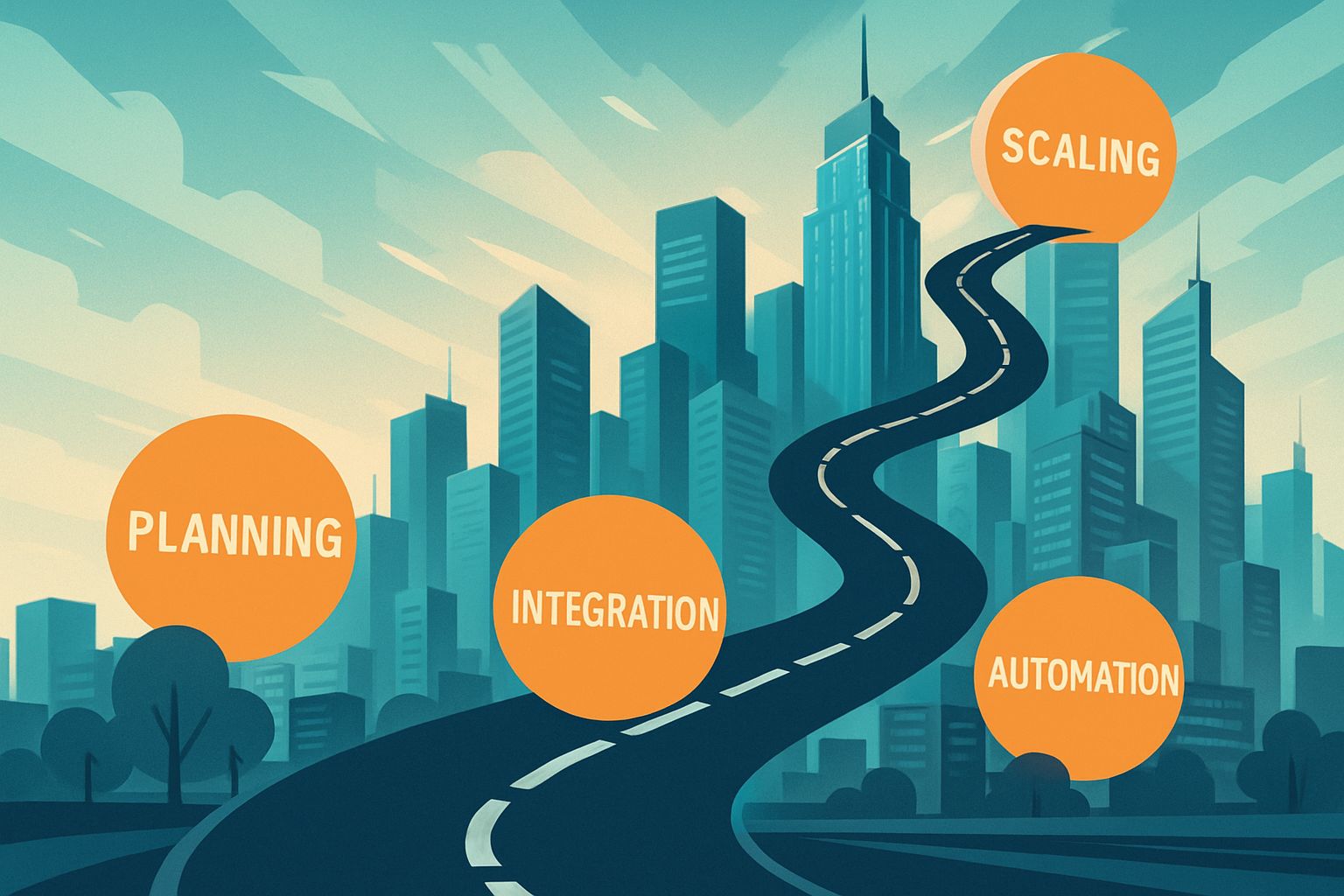
AI CERTS
24 hours ago
Enterprise Strategy: CIO Guide to Scaling AI Successfully
Readers will learn cost pitfalls, talent models, and procurement questions that accelerate success. Finally, professionals can benchmark Readiness against peers and explore relevant certifications for rapid upskilling.
However, every sentence in this article stays concise to enhance clarity for technical leaders. Therefore, expect short paragraphs, varied transitions, and actionable, board-ready insights. Meanwhile, we will use data center power statistics to stress cost implications. In contrast, many vendor brochures ignore such hidden liabilities. Nevertheless, disciplined governance, robust MLOps, and clear KPIs mitigate most risks. Let us begin the journey toward enterprise value at industrial scale.

Global AI Spending Outlook
Gartner projects AI related IT spending will reach $1.48 trillion in 2025. Additionally, the firm expects more than $2 trillion by 2026 across software, semiconductors, and devices. Moreover, Citi research estimates 55 gigawatts of extra power will be needed by 2030. Consequently, hyperscalers continue unprecedented capital programs, shifting cost structures for enterprise buyers. In contrast, private data centers struggle to match efficiency or geographic reach. Therefore, sourcing decisions must align with long-range capacity models and carbon targets. These numbers set the financial context for any Enterprise Strategy discussion. Such perspective prepares teams for the next challenge set. AI budgets are exploding, and energy constraints loom large. However, spending alone solves little without addressing organizational obstacles discussed next.
Gartner Market Forecast Insights
Gartner segments the trillion-dollar opportunity into five product domains. Specifically, application software leads, followed by infrastructure, AI PCs, servers, and specialized silicon. Furthermore, analyst John-David Lovelock highlights emerging spending beyond United States suppliers. Meanwhile, European and Asian vendors expand portfolios to meet sovereign cloud requirements. Consequently, procurement leaders must watch regional incentives and regulatory packages. In contrast, ignoring geopolitical dynamics can inflate lead times and integration cost. Therefore, each Enterprise Strategy should refresh vendor maps every quarter. These forecasts inform risk adjusted budgeting. Next, we examine why budgets stall at the proof-of-concept stage.
Barriers To Effective Scaling
McKinsey reports 88% of firms pilot AI yet few achieve enterprise returns. Moreover, data quality, governance gaps, and poor incentives block migration to production. Additionally, brittle integration surfaces cause reliability incidents that erode stakeholder trust. Consequently, many pilots become expensive shelfware rather than live services. In contrast, organizations with mature MLOps pipelines report faster defect resolution. Therefore, CIOs should treat MLOps as core infrastructure, not optional tooling. Readiness also depends on cross-functional fusion teams empowered to own lifecycle metrics. These obstacles emphasize why robust preparation matters. However, a structured Enterprise Strategy can address each weakness, as the next section shows.
Operational Readiness Frameworks Key
NIST’s AI Risk Management Framework offers a pragmatic GOVERN, MAP, MEASURE, MANAGE cycle. Furthermore, EU AI Act timelines require impact assessments for high-risk systems by 2026. Consequently, governance charters should link compliance tasks with engineering backlog items. Meanwhile, CoEs provide shared registries, policy templates, and secure data connectors. Moreover, role-based education improves operational Readiness and embeds risk vocabulary across staff. Professionals can enhance their expertise with the AI Learning Development™ certification. Therefore, integrating training with policy rollouts accelerates cultural adoption.
Key readiness tasks are:
- Inventory current AI assets and risks.
- Define ownership for models, data, and controls.
- Implement versioned model registry and feature store.
- Establish approval gates aligned to NIST functions.
Robust frameworks and training create a compliant Enterprise Strategy launch pad. Next, we explore how Automation converts readiness into measurable value.
Automation Value Realization Path
Automation outcomes arrive once AI embeds inside end-to-end processes. Furthermore, orchestration platforms connect models, retrieval engines, and human approvals. Consequently, knowledge workers receive contextual suggestions rather than generic chat sessions. Moreover, retrieval-augmented generation reduces hallucinations and shortens review loops. In contrast, disconnected bots create duplicate logic and opaque decisions. Therefore, each Enterprise Strategy must include an orchestration reference architecture.
Example KPI categories include:
- Cycle time reduction per process.
- Cost per inference versus baseline.
- User satisfaction and adoption rates.
- Defect escape rate post-deployment.
These KPIs translate Automation into hard returns. However, engineering rigor underpins every successful metric, as discussed shortly.
Core Enterprise Strategy Steps
CIO roadmaps follow six iterative steps that align technology, people, and economics. Firstly, clarify business KPIs and link funding to measurable results. Secondly, form fusion teams with product, data, legal, and security stakeholders. Thirdly, harden data foundations through cataloging, lineage, and access controls. Fourthly, implement MLOps pipelines that automate testing, deployment, monitoring, and rollback. Fifthly, negotiate vendor contracts with transparent SLAs, provenance clauses, and scalable pricing. Finally, drive continuous improvement through KPI dashboards and quarterly retrospectives. Therefore, the Enterprise Strategy evolves with market dynamics and regulatory changes. These steps ground strategic visions in operational reality. Next, leaders need a time-boxed action plan to ignite momentum.
Ninety Day Action Plan
Day zero to thirty, catalog shadow projects and calculate scale costs for top three cases. Additionally, assign an executive steward and define pilot graduation criteria. Day thirty to ninety, stand up the CoE and deploy a basic model registry. Moreover, configure CI/CD and feature store components to support upcoming releases. Day ninety to one-eighty, embed governance gates and negotiate vendor contracts with modeled TCO. Consequently, early wins reach production without accumulating technical debt. Therefore, the Enterprise Strategy secures board confidence and budget continuity. These phased milestones maintain focus and velocity. Finally, we summarize critical lessons and invite further learning.
Scaling AI demands more than bigger clusters; it requires disciplined organisational change. Moreover, Gartner forecasts underline the stakes, while McKinsey surveys expose execution gaps. Consequently, leaders should integrate governance, MLOps, and Automation metrics into one Enterprise Strategy roadmap. Additionally, Readiness improves when teams pursue structured education and certification. Professionals can deepen skills through the linked AI Learning Development™ program. Therefore, act now, audit current projects, and refine your Enterprise Strategy before budgets lock. Visit our resources library for templates, vendor checklists, and future AI coverage. Your next at-scale deployment starts today.



